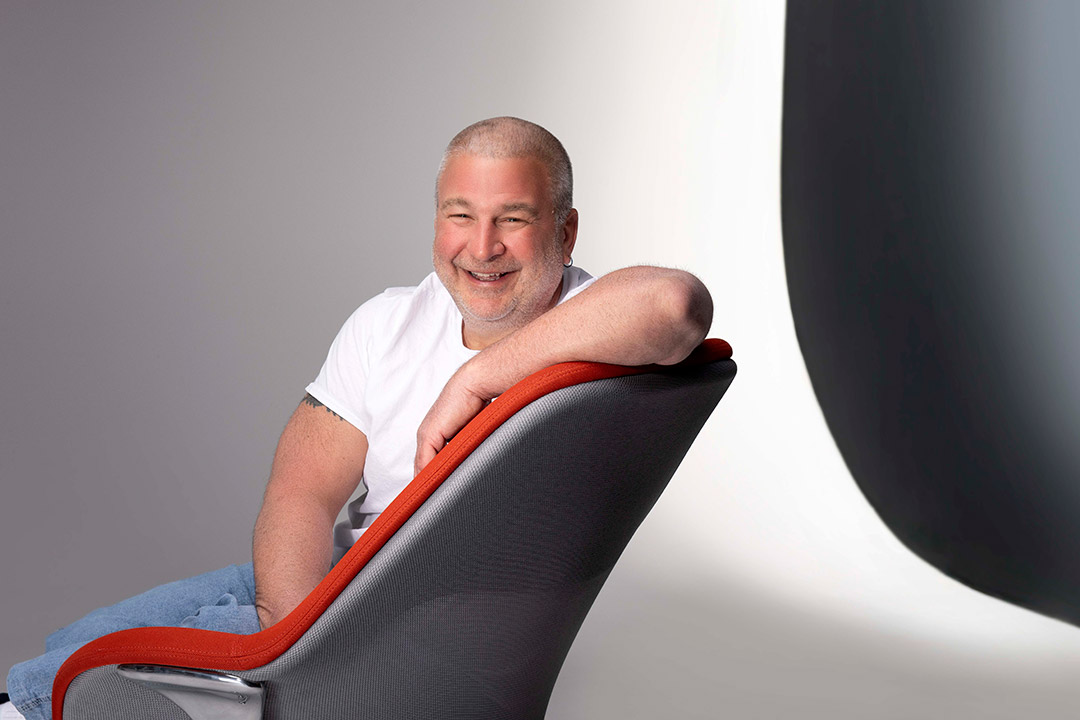Imaging science professor continues legacy of his mentors
Carl Salvaggio receives the Eisenhart Award for Outstanding Teaching
Carlos Ortiz/RIT
Professor Carl Salvaggio is a recipient of the Eisenhart Award for Outstanding Teaching, RIT’s highest honor for tenured faculty. A leader in the Chester F. Carlson Center for Imaging Science, he was one of the earliest graduate students of the program.
Carl Salvaggio ’87 BS/MS (imaging science) had no plans to pursue teaching when he left his hometown in New Jersey for Rochester in the 1980s. He enrolled as a biomedical photography major at RIT because of his passion for photography and the recommendation of a high school teacher he admired.
But Salvaggio quickly realized that his photography skills were nothing compared to his fellow students’ skills. So, he walked down the hallway and found a different program—photo science, which would in time become imaging science.
Meet the other Eisenhart winners
Electrical engineering professor connects history with the future for today’s students
There, he met Ronald “Doc” Francis, who helped him start down his life’s path to become a professor in the Chester F. Carlson Center for Imaging Science, the director of the Digital Imaging and Remote Sensing (DIRS) Laboratory, and now a recipient of the Eisenhart Award for Outstanding Teaching.
“The first day I saw a student’s face understand something that I was teaching, that hooked me on the career,” said Salvaggio.
In a radiometry course for his major, Salvaggio met his next mentor. During a test, Professor John Schott tapped Salvaggio on his shoulder and asked to meet with him after class. Schott was a newly hired professor tasked with starting a research program and the university’s first Ph.D. program. That conversation led to Salvaggio earning his master’s degree and helping Schott in the formation of the DIRS lab.
“John became one of my greatest friends and my mentor,” said Salvaggio. “Because of the time he spent with me to do everything in life, I knew I wanted to do this as a career so I could possibly affect others in this same way.”
However, Salvaggio felt he needed to gain experience outside of RIT. He enrolled at the State University of New York College of Environmental Science and Forestry and earned his Ph.D. in environmental resource engineering. He was employed as a research scientist and teaching a course at RIT while working part-time on his doctorate. He knew at that point working in academia was where he wanted to be, but felt he needed a different experience to help grow from RIT student to faculty.
“I still remember this day,” recalled Salvaggio. “It was May 1994. I walked into John’s office and said, ‘I’m done. I have to go find my own career, but I’m coming back some day.’”
Salvaggio spent eight years working in the intelligence community and formed his own company with other imaging science graduates. Every summer, Schott would call Salvaggio asking if he was ready to come back. The answer was always no.
That was until another memorable day came along: Sept. 11, 2001. Salvaggio had just returned from a three-week experiment and was scheduled to be on Flight 93, one of the four planes hijacked on that fateful day. However, his supervisor allowed him to cancel that trip the day before departure.
“That’s when I said, ‘the next time John calls, I’m going to say yes,’” said Salvaggio.
After that day, his work for the next year focused on helping the intelligence community, the Department of Defense, and those cleaning up what was left behind by the attacks of that day. But, when Schott called him that next summer, he said yes. He returned to RIT in 2002.
It was the life experience and lessons from all of his mentors, many of whom were past recipients of the Eisenhart Award, that made Salvaggio a teacher worthy of the accolade.
“Those real-world experiences are the things that make you realize what’s important academically,” said Salvaggio. “During the time I spent as a research scientist here and the time travelling all over the place doing experiments, I learned so many things, so many lessons, many as the result of some of the stupid things that I did. Those are the stories you tell in class. I think you can learn more from making mistakes than you do from doing everything right the first time.”








